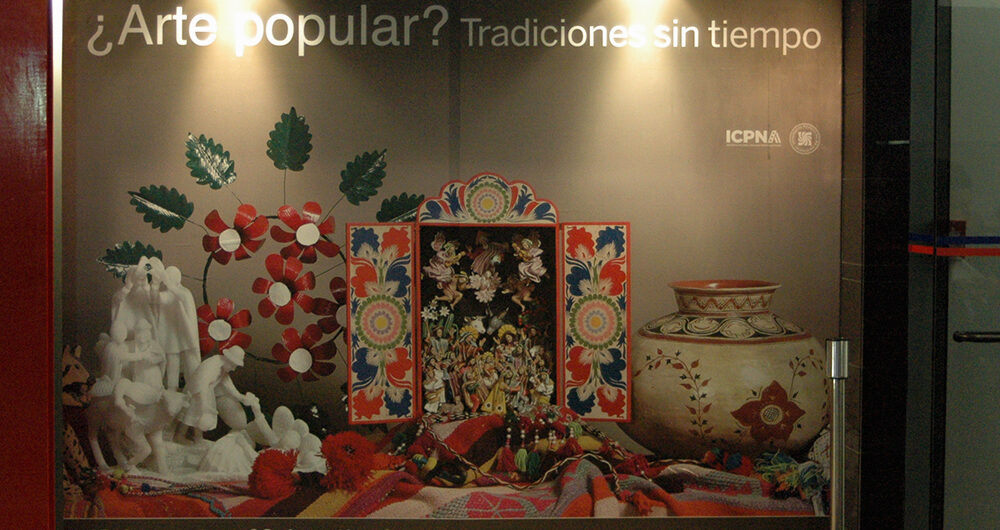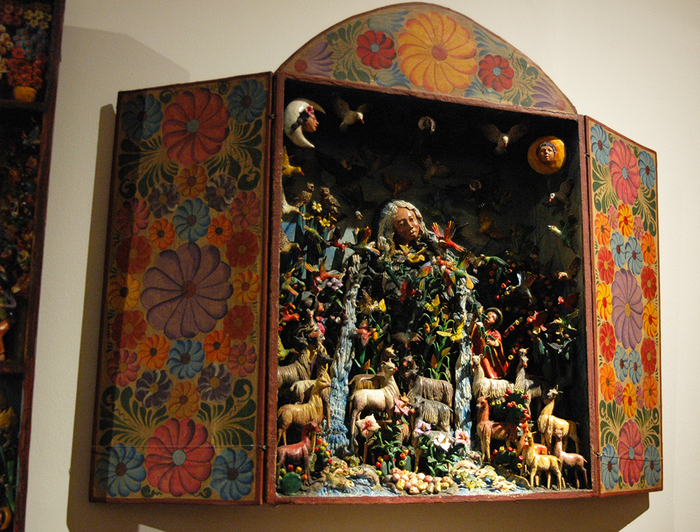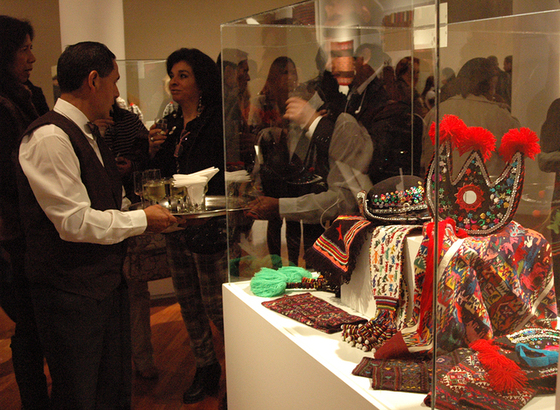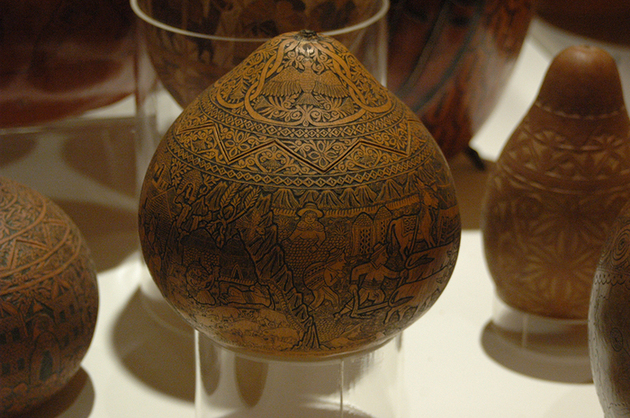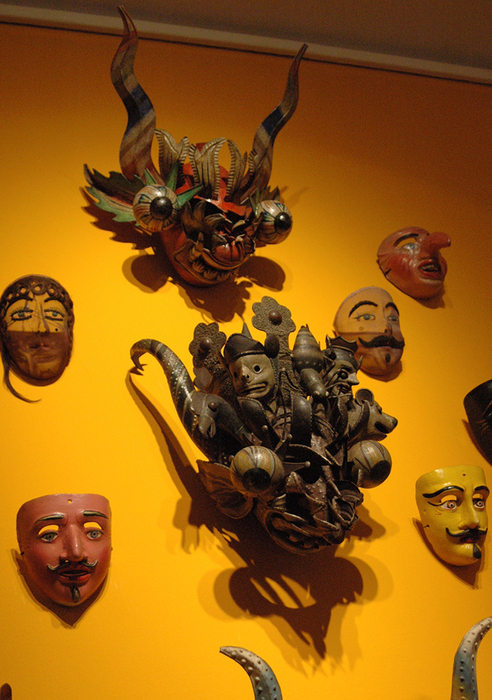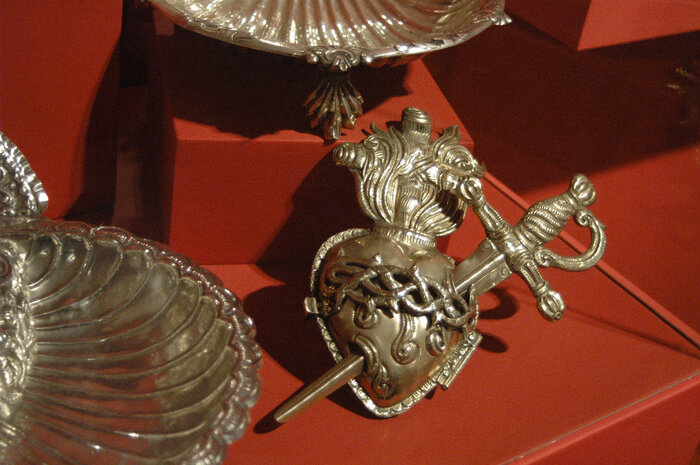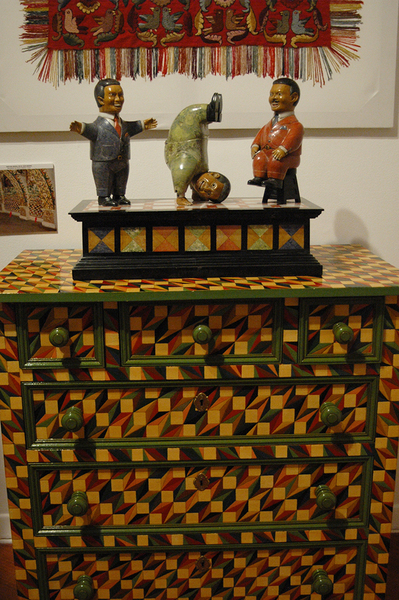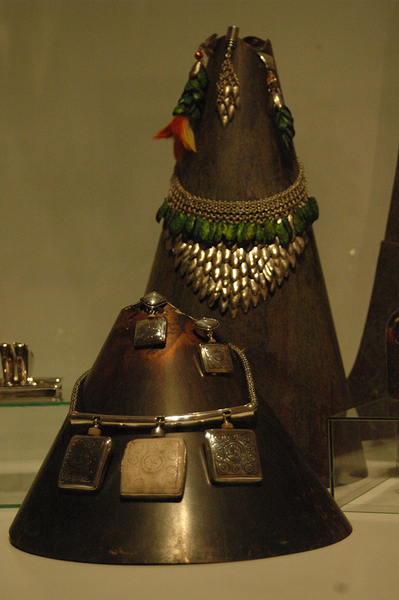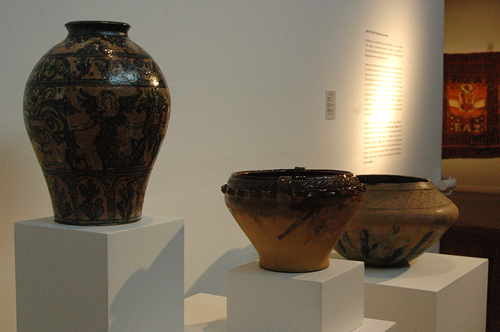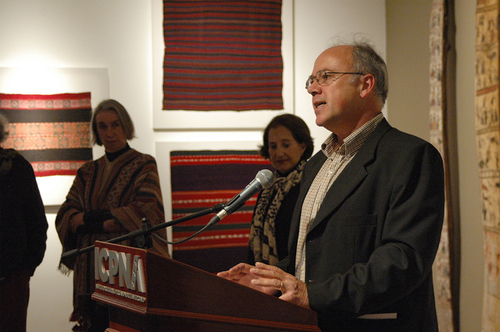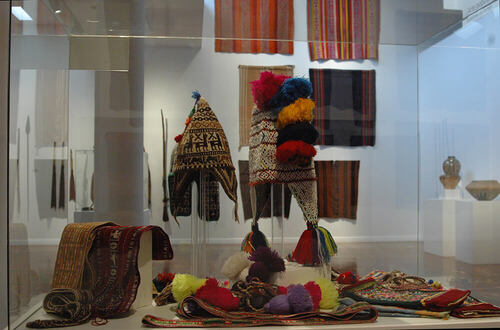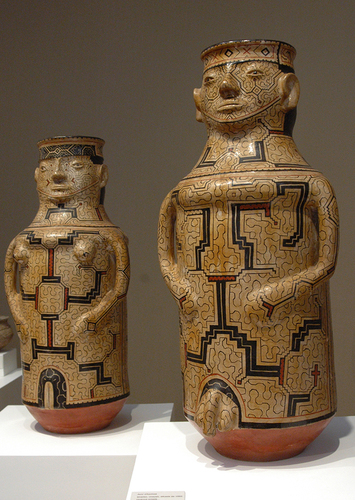On August 15th Aracari was invited to attend the inauguration of an exhibition of popular art at the Peruvian-North American Cultural Institute (ICPNA) curated by Aracari’s history and art specialist in Lima, John Alfredo Davis Benavides. The exhibit is free to the public and will be on display from now until the 28th of September.
Peruvian Popular Art Exhibition in Lima
John Alfredo, along with two other curators, artist Jaime Liébana and owner of Las Pallas arts and handicrafts shop, Mari Solari, collaborated to assemble this exhibit with over 300 pieces on display. It is the final exhibit in a series on popular art that began over a decade ago at the ICPNA, which was co-sponsored by the University of Ricardo Palma in Lima. The exhibits have been organized by region, theme, subject and medium, but this last one was the most ambitious, aiming to take on the concept of popular art as a whole.
On a Friday evening, people crowded into the Germán Krüger Espantoso Gallery at the ICPNA in Miraflores for the opening of the exhibition titled, “Arte Popular? Tradiciones Sin Tiempo”, which translates as, “Popular Art? Timeless Traditions”. After a warm introduction from the director at the ICPNA, John Alfredo spoke to the audience about the exhibition and the general question it provokes, which is, about popular art being treated as real art rather than cultural artifacts or crafts. He continued to explain briefly the organization of the exhibit, which was ultimately arranged into three categories: ethnic art, rural art and urban art. After his words, the crowd broke up and perused the gallery, munching on hors d’ouerves and sipping wine that was provided at the event.
A few days after the inauguration, we sat down over a coffee with John Alfredo in his workshop to talk about the exhibit. He explained to us that the idea for the series originated in a conversation some 13 years ago, which prompted him to request an exhibit on popular art, which the ICPNA accepted. A year ago came the proposal for the last exhibit of the series, which was a challenge to do something culminating that would attempt to propose a definition of popular art as being art, “of the people, not necessarily for the people.”
Many of the past exhibits had been curated by scholars of art history or anthropology who had treated the handicrafts as artifacts or specimens of cultures rather than as art. Thus, John Alfredo strove to present the pieces in this exhibit as works of art, taking into consideration the purpose of production, environmental influence and possible markets for which they targeted. And of course, the exhibit proves something that has been of concern in Peru, which is that popular art is alive and in many areas is undergoing a revival.
Ethnic art
The first section of the exhibit, John Alfredo explained, are the pieces of ethnic art, made by ethnic or cultural groups in Peru for their ritual, spiritual and cultural use. These pieces—ceramics by the Shipibo peoples of Ucayli, textiles by the Q’eros community of Cusco—pass history and traditions specific to that group from one generation to another with an origin in myths or common lore of the people. Many pieces are from anonymous artists with some exceptions. One of the pieces featured, and in fact the image that appears on the brochure of the exhibit, is a textile that John Alfredo purchased at the famous Sunday market in Huancayo by a group of weavers in Hualhuas, a community in the Mantaro Valley.
Rural Art
The section devoted to rural art included pieces that were produced in the countryside for practical or functional use like hand-woven baskets used for selling bread at markets, wooden-carved toys for children, as well as objects created for festivals according to the agricultural season like masks. These arts are passed down through families and within communities but also would spread through regions via itinerary craftsmen, known for specific trades. Some examples include the carved gourds produced in the Sierra Central of the Andes, the famous retablos from Ayacucho, the toritos de Pucará from the Lake Titicaca region and ceremonial masks from festivals like the Tunantada of Jauja or the Candelaria of Puno.
Urban Art
Lima is not your typical capital with more than a third of the country’s population living within its bounds currently. In the 1940’s, the exhibit explains, the rural population was 65% and now it has dropped to 24%, meaning that those people who lived in the countryside are now in the city, bringing with them their different arts and traditions. This has resulted in a new phase of art in which techniques and handicrafts have evolved for new purposes and most importantly, new markets. Those buying art in urban centers have specific tastes, which in turn has affected the production of handicrafts and art that in rural areas in the past were made and sold among people within specific trades. Now, objects like pre-Hispanic and viceregal textiles, silver works, and furniture of the viceregal period are in demand for their value and history. These pieces in addition to popular urban art like chicha posters, plaster hand-made saints, handcrafted furniture like some of the striking pieces by Jaime Liébana and silver jewelry by Ester Ventura are among those on display in this section.
The exhibit is impressive and certainly worth a visit if you are currently in Lima. Located at Av. Angamos Oeste 160 in Miraflores, the gallery is open from Tuesday to Sunday from 11am to 8pm. If you are interested in visiting, contact us for more information!

